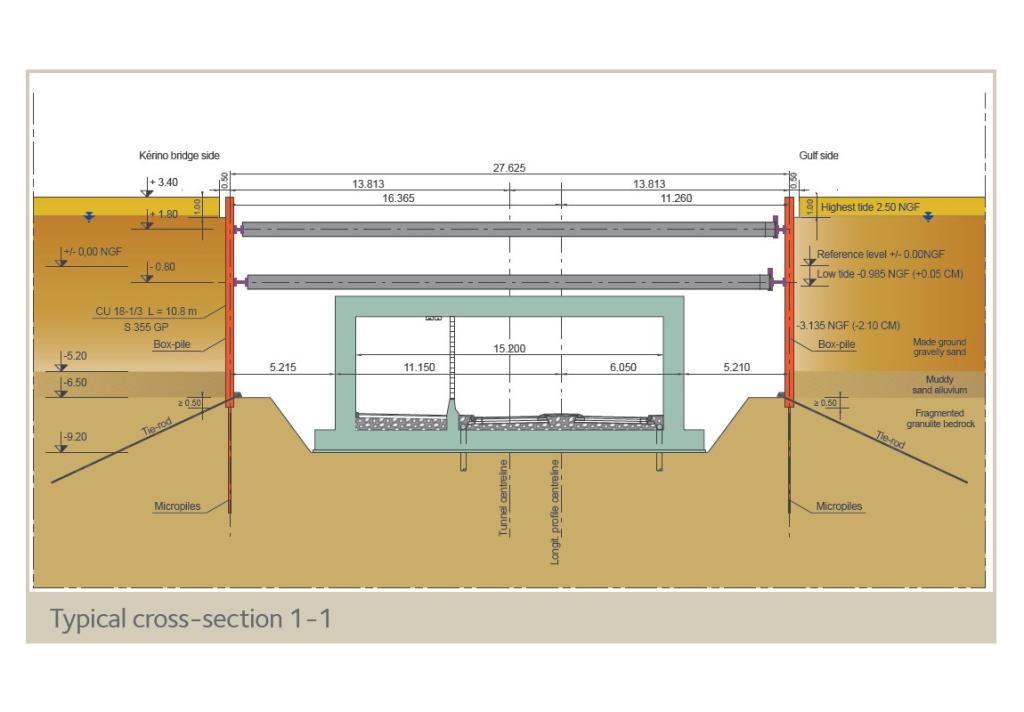Kérino tunnel. Vannes | France
Solving Traffic Issues in Vannes with a New Underpass Beneath the Harbour Entrance in France
The city of Vannes, on the Gulf of Morbihan, is Brittany’s fourth-largest conurbation. For some years it was plagued by an urban-transport problem in the port, where the interests of road vehicles and boats were in conflict at the Kérino swing bridge, with vehicles using it to cross the entrance to the harbour, and boats requiring it to be opened to leave or enter. Both vehicle and boat traffic were governed by tides and the position of the bridge which was opened 102 minutes per day, on average, to allow 7,500 boats through every year, compared to 15,000 vehicles crossing every day. The fluidity of traffic was thus severely affected.
The Kérino swing bridge has been replaced by an underpass beneath the entrance to the harbour. This enables road and water traffic to move fluidly simultaneously. The underpass comprises two lanes for vehicles and a separate lane for pedestrians and cyclists. It consists of a 153-m-long western approach ramp, a 248-m-long cut-and-cover tunnel section, and a 150-m-long eastern approach ramp.


 English
English
 German
German
 French
French




